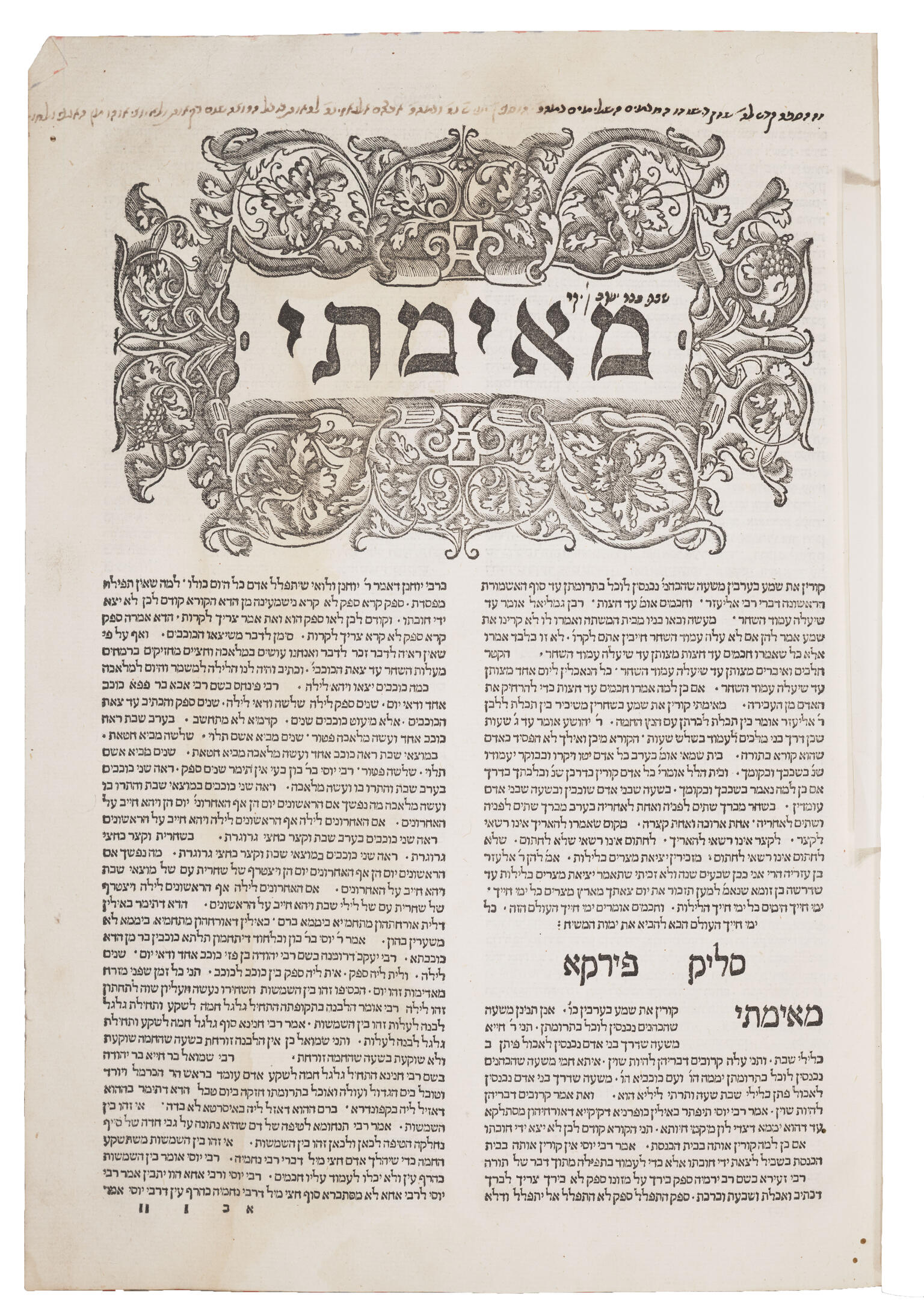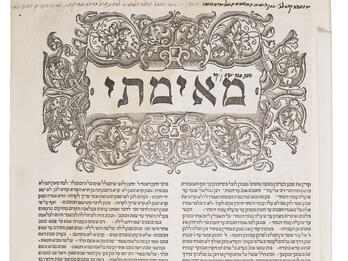Colophon: Seder taharot (Order of Purification)
So said Jacob ben R. Ḥayim Ibn Adoniyahu of blessed memory, after completing the proofreading of Seder taharot, I intended to apologize, since the subject is not habitual, and the source texts are few and not easy to find except with great effort, and it is known to every literate man, that the Lord knows how much effort and burden I bore until I managed to complete the proofreading of this book, since I only possessed a single copy from [tractates] Kelim until Nega‘im, and it is entirely erroneous, even though it was given to me as if it had been examined, and in it were found nine heaps of leavened bread and eighteen measures of sourdough, and in the Tosefta in every single place there was no home without a corpse, and even in the examined places there were errors . . . and we, in the modesty of our opinion, weighed and measured it well in every place until it was bright and clear, and in a few places that seemed to me to be lacking something I added on my own counsel . . . and what I was unable to do was in the Tosefta in Kelim, because my own copy of the Tosefta in that very place was also faulty, I left the place blank . . . also in a few places I made a correction . . . Also in a few places, when in two copies the paths were different in clarifying the matter, when one interpreted it one way and the other in another way, even though they did not entirely disagree, I ordered the printers to print both explanations, so that nothing would be missing in it, and were it not that I was engaged in proofreading Maimonides, I would have taken trouble with it differently, so that every literate person and son of a literate person would be pleased with it. . . . Hence, if any error is found in it, let everyone who sees and peruses know that it was not from my heart, that an error came because of haste, and I have already made my apology in several other books that I proofread.
Translated by
.
Credits
Jacob Ibn Adoniyahu, “Colophon,” in Seder Taharot (Order of Purification) (Venice: 1523). Republished in ʻAmudim be-toldot ha-sefer ha-ʻivri: hagahot u-megihim (Chapters in the History of the Jewish Book), by Yaʻakov Shemu’el Shpigel (Ramat-Gan: Bar-Ilan University, 1996), 218–219.
Published in: The Posen Library of Jewish Culture and Civilization, vol. 5.





